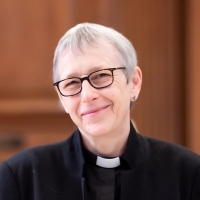When I was in my late teens, my delightful godmother sent me a bookmark which had on it a motto that I reacted against so strongly that rather than using it, I put the item in the back of a drawer and did my very best to forget all about it.
To explain why I reacted so strongly against it (I shall tell you what it said in a moment), it is helpful to let you know what was going on in my life at the time. I was a very work-obsessed undergraduate, rather precious about all things intellectual, trying desperately to conceal my basic and deep-seated personal insecurity through academic success and the acquisition of knowledge. And it was then that I received through the post that very beautiful bookmark, featuring the image of a unicorn, which bore the message, ‘To know is nothing at all, to imagine is everything’.
It was, of course, only a bookmark – and yet, at the time, I was thoroughly indignant – after all, my entire existence was characterised by a commitment to knowing; to extending the knowledge that I had, to testing the assumptions of others against hard fact. The whole business of imagining things seemed to me to be fundamentally suspect, best restricted to the make-believe games of primary school age children. After all, into what realms of fantasy might it lead one? And I carried that set of assumptions with me for an alarmingly long time – until my outlook was suddenly challenged in the most unexpected and lasting of ways
Yesterday, 31st July, the Church’s calendar commemorated Ignatius of Loyola: a Basque nobleman and soldier, who was wounded at the siege of Pamplona in the year 1521. During his convalescence, he famously read a Life of Christ, which was to overturn his life: he experienced a profound conversion that led him eventually to found the Society of Jesus, which we now refer to as the Jesuit Order. And with it a set of spiritual disciplines, that were to develop over time into something very distinctive. And one aspect of Ignatian spirituality, particularly associated with retreats in daily life that some of you may have heard about, or taken part in, invites the participant, within the context of prayer, and with the help of a trained prayer guide, to take a biblical text and to enter it, or engage with it, imaginatively, to see what unfolds within that time of prayer.
You can perhaps imagine how strongly I reacted against this whole idea when I first encountered it – but eventually and rather grudgingly, I decided to suspend my disbelief, and my concern that I wasn’t entirely sure that I had an imagination in any case – and to give it a go. And I have to say that the experience that emerged from my first encounter with this approach to prayer and scripture was so astonishing, and life-transforming, that it completely overturned some of my assumptions about myself, about prayer, about scripture, and about how God speaks to us.
I was richly blessed in the prayer guide I had when I first took part in this kind of retreat, which made a huge difference to the experience. But to illustrate the way in which this kind of approach to prayer and the Bible can be profoundly illuminating, I would like to give you an example from the first time that I did an eight-day Ignatian retreat at St Beuno’s the Jesuit Centre for Spirituality in north Wales.
On my first day there, I was given as a text to reflect upon, the story of the baptism of Jesus by John in the river Jordan – a familiar enough biblical text, which sounded like a really interesting and straightforward starting point. But to my consternation and frustration, I got nowhere with it. I tried desperately hard to imagine myself on the banks of the river, visualising the scene, trying to enter into it – but I couldn’t get anywhere near the water – there seemed to be huge boulders and blocks of wood were in the way barring my path – I couldn’t even see Jesus, let alone envisage the event.
But oddly enough that very experience proved to be the starting point of one of the most profound spiritual journeys of my life. Because it made me reflect upon what it was that was blocking my path in that imaginary situation. Why was it that I was struggling to see Jesus? And as the retreat progressed during the course of that week, I realised that the problem was a very real one: it was something that was deeply unresolved in my life at the time – a very difficult relationship with a former colleague, that had left me feeling angry, wounded and very resentful, although I hid it very well.
And so the rest of the retreat I spent dismantling that barrier. And strangely enough the key that enabled me to do that was a reflection on the passage in the Gospels in which blind Bartimaeus was healed by Jesus. Because entering imaginatively into that story, I found myself standing in the place of Jesus looking at that blind beggar, and realising with a jolt that I was looking at the colleague who had made my life hell – sitting there in the dust – blind and in need of compassion. And by the end of the retreat, the artwork that I was producing (you are encouraged to paint and draw, if you find it helping), was depicting myself and that individual, not as enemies, nor as rivals, but remarkably journeying together, side by side, following Jesus.
What was so extraordinary about that experience was that I began that retreat not even aware that the legacy of that particular relationship was even something that I needed to address – my anger and resentment was buried so deep – and yet, by the end of my time there, I was in a completely different place with that whole event in my life; and so I was in a very different place in my relationship with Christ.
We never stop learning about the riches of the spiritual life; we must never stop ourselves from being surprised at the ways in which God can speak to us – often in ways that overturn all of our expectations.
Sometimes Christ finds us, and brings us his healing and his hope, when we don’t even recognise that we are wounded.
Which is perhaps why one of the most well-known Jesuit writers on spirituality of our own era, Gerard Hughes, gave as a title to what is perhaps his best-loved book, God of Surprises.
Amen.



